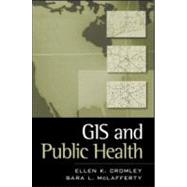This clearly written resource provides a comprehensive introduction to the use of geographic information systems (GIS) in analyzing and addressing public health problems. The book guides the reader through basic GIS concepts and methods, with an emphasis on practical applications. Described are ways that GIS can be used to map health events, identify disease clusters, investigate environmental health problems, understand the spread of communicable and vector-borne infectious disease, and more. Numerous tables, figures, and concrete examples are included. The companion website features downloadable GIS databases that allow readers to practice a variety of spatial analytical techniques.








